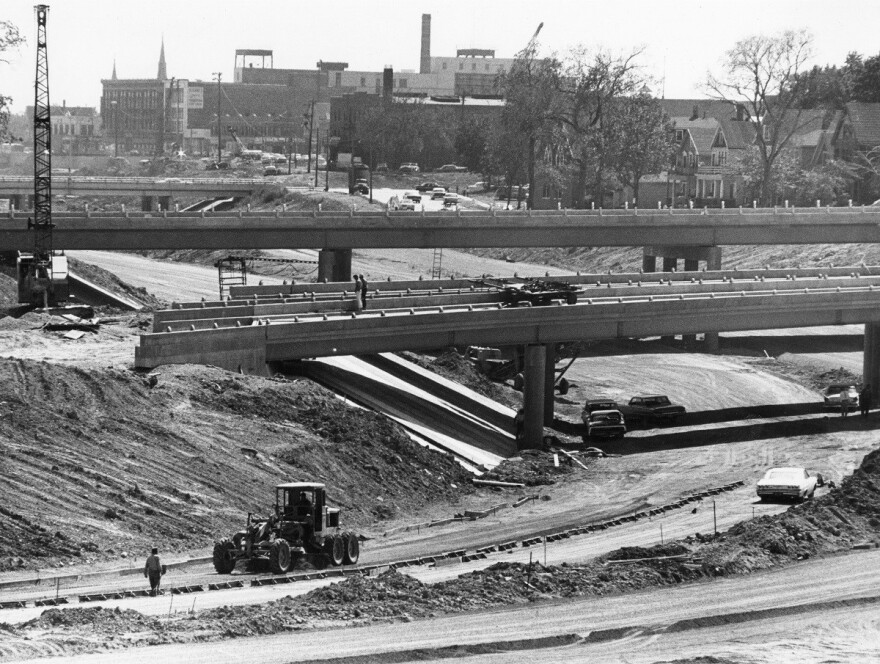In the first half of the 20th century, Milwaukee’s Bronzeville neighborhood was the commercial and cultural hub for Black residents. From law firms to jazz clubs, Black-owned businesses thrived in the racially segregated, near northside neighborhood.
But when construction of Milwaukee’s freeways began in the 1960s, Bronzeville residents were severally impacted. Businesses had to move, homes and churches were demolished and the community began to fracture.

Artist Mutòpe j. johnson grew up in Bronzeville and his newest exhibition, In Search of a Benevolent Kind of Blue, is centered around remembering the history of Black Milwaukeeans. The exhibit features paintings, digital creations and installations, and is open for in-person visits at the UWM Union Art Gallery through May 13 and online as a virtual tour.
“I see myself as a character witness being a kid in Bronzeville,” he says. “Bronzeville was the kind of community where you didn’t have to leave to go anywhere to get goods and services, you know, it was one of those moments where the doctor made house calls.”
The individual pieces in johnson’s exhibit are all tied together through the use of the color blue. While blue is often associated with sadness, he says the only gloom he is trying to portray is what became of Bronzeville after the community was torn apart.

“The only sense of loss there is, is what happened to the neighborhood when it was thriving and at a peak time in history when it was culturally rich with culture that you can’t go to the store and buy,” he says.
While the art is meant to memorialize this time in Bronzeville’s history, there is an eye towards the future as well. He points to his paintings that include both current Milwaukee artists and artists who visited Bronzeville in its heyday, as one way both the present and the past are represented in his work.
johnson says there are people working to bring back the spirit of the old neighborhood, including community organizations like the Historic King Drive Business Improvement District and Bronzeville Collective.
“[Past artists] have left a residue behind for us to carry into the future in hopes that Bronzeville will rise from the ashes,” says johnson.







